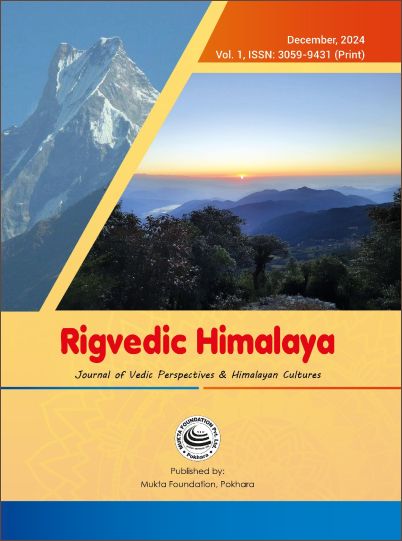Cross-cultural Significance and Impact of the Gaura Festival: A Comparative Study between Sudurpashchim Province (Nepal) and Uttarakhand (India)
DOI:
https://doi.org/10.3126/jorh.v1i1.75190Keywords:
Gaura-Maheshwor, Manas Pradesh, Shiva-Parvati, Sudurpashchim, UttarakhandAbstract
The Gaura festival, deeply rooted in the Himalayan region, particularly in Nepal and Uttarakhand, India, is explored in this article for its religious, cultural, and social significance. Celebrated in Sudurpaschim and Karnali Provinces of Nepal and Uttarakhand province in India, the festival is integral to the Manas Pradesh region, where Vedic beliefs intricately merge with the festivities. Honoring the inseparable bond of Lord Shiva and Parvati, Gaura festival's boundaries are defined by the Mahakali or Sharda River, shaping its observance. The article underscores the festival's role in promoting religious tourism while preserving Vedic traditions amid modern challenges.The research delves into the festival's connection with Vedic values, providing a crucial link to the region's glorious past, often overlooked by the youth. Utilizing qualitative methods, including interviews, observations, and historical study, the paper emphasizes Gaura festival's unique position in maintaining Vedic purity amidst distortions in other celebrations. Serving as a cultural bridge, Gaura Parva holds a special place in the hearts of Himalayan inhabitants, embodying a harmonious blend of their heritage, religious convictions, and the lush natural environment.
Downloads
Downloads
Published
How to Cite
Issue
Section
License
Copyright (c) 2024 Mukta Foundation Pvt. Ltd

This work is licensed under a Creative Commons Attribution-NonCommercial 4.0 International License.
This license enables reusers to distribute, remix, adapt, and build upon the material in any medium or format for noncommercial purposes only, and only so long as attribution is given to the creator.




